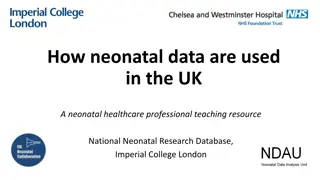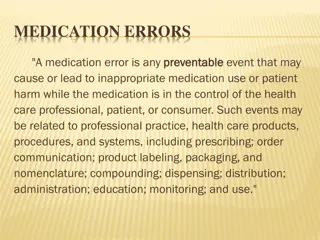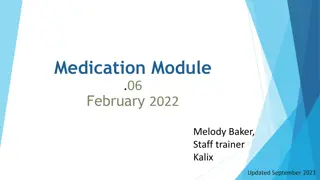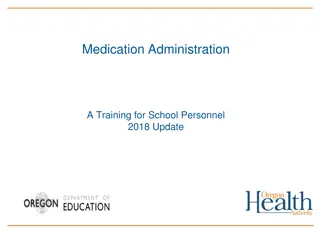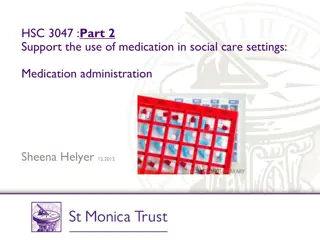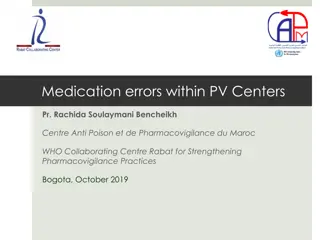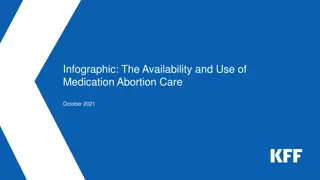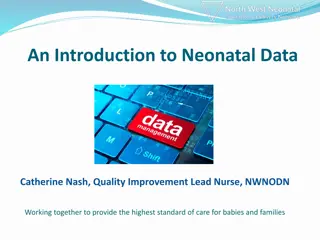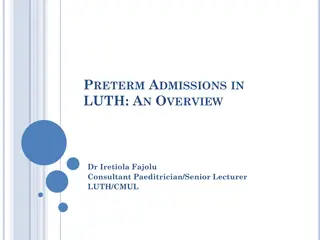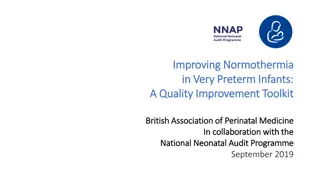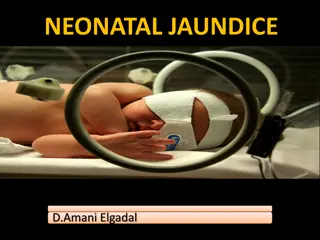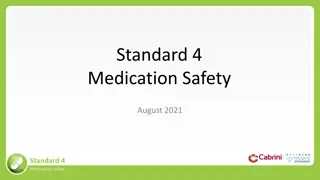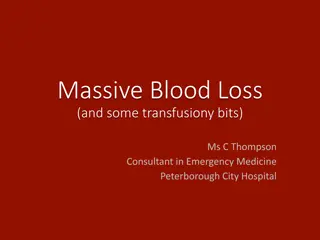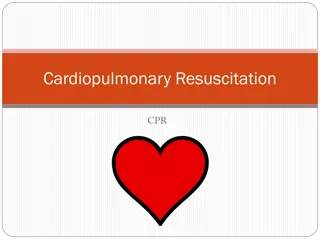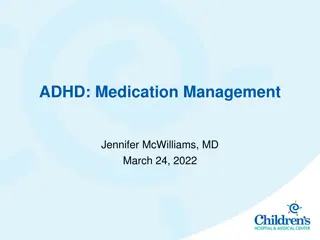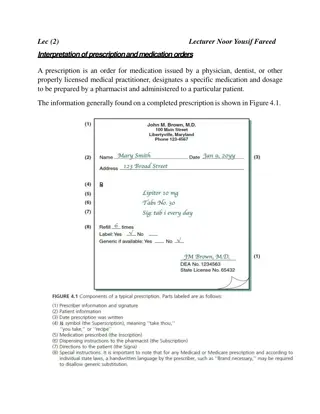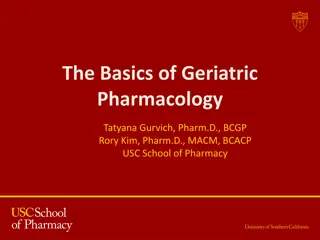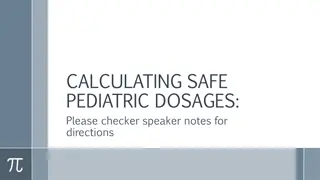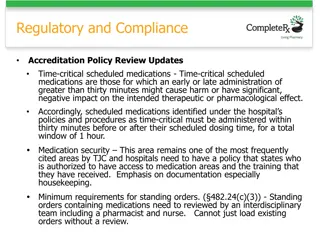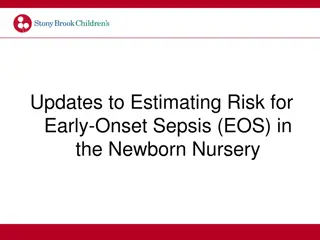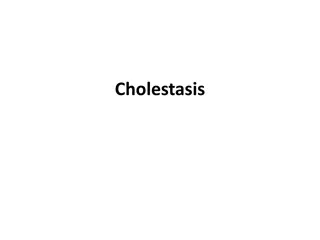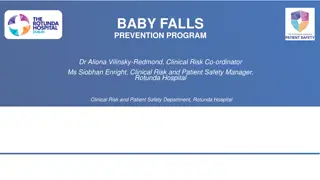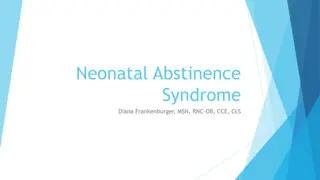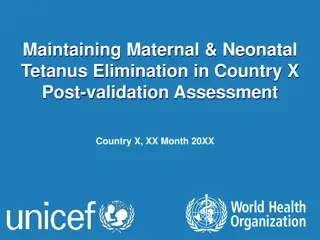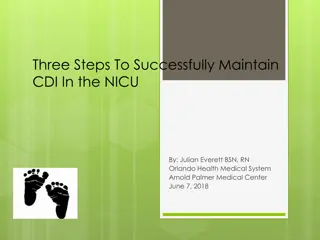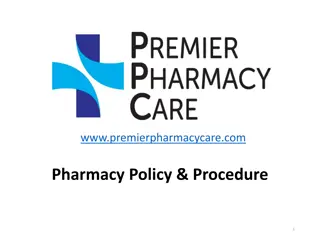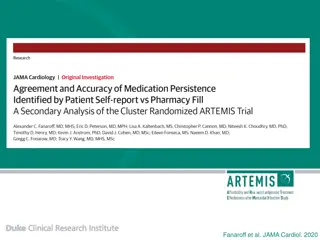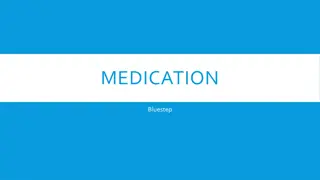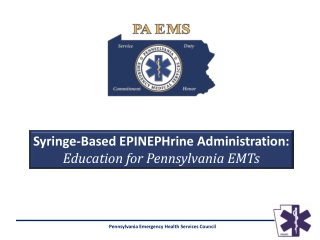Neonatal Medication Administration and Resuscitation Overview
Neonatal resuscitation may involve administering medications like epinephrine and volume expanders in specific situations such as hypovolemic shock. Before giving medications, ensure proper ventilation and compressions. Epinephrine helps with coronary artery perfusion and oxygen delivery, while volume expanders may be necessary in emergencies. Understanding when and how to administer these medications is crucial for improving outcomes in newborn resuscitation.
Download Presentation

Please find below an Image/Link to download the presentation.
The content on the website is provided AS IS for your information and personal use only. It may not be sold, licensed, or shared on other websites without obtaining consent from the author. Download presentation by click this link. If you encounter any issues during the download, it is possible that the publisher has removed the file from their server.
E N D
Presentation Transcript
When to give epinephrine How to administer epinephrine When to give a volume expander How to administer a volume expander What to do if baby not improving after IV epinephrine and volume expander How to insert an Intraosseous needle
Most newborns will improve without medications Before medications Check ventilations and compressions Epinephrine will coronary artery perfusion and O2 delivery Newborns with shock from acute blood loss Bleeding vasa previa, fetal trauma, cord disruption, severe cord compression May require emergency volume expander
Cardiac and vascular stimulant Constricts blood vessels outside of the heart Increases blood flow into the coronary arteries Blood in coronary arteries carries 02 - restores cardiac function Increases the rate and strength of cardiac contractions
HR < 60 bpm AFTER 30 sec of PPV that inflates the lungs AND Another 60 sec of chest compressions coordinated with PPV at 100% of 02 Epinephrine IS NOT INDICATED before you have established ventilation that inflates the lung
Only the 10,000 preparation (0.1mg/ml) used for neonatal resuscitation Route IV or IO Dose: 0.1-0.3ml/kg Give rapidly Endotracheal tube Dose: 0.5-1ml/kg Follow with PPV breaths to distribute drug into lungs
Signs of Hypovolemic Shock Persistent low HR, not responding to effective ventilation, chest compressions, and epinephrine Pale, delayed capillary refill, weak pulses Sometimes no sign blood loss History of acute blood loss Fetal maternal hemorrhage, bleeding vasa previa, vaginal bleeding, placental laceration, fetal trauma, umbilical cord prolapse, tight nuchal cord, blood loss from umbilical cord, fetal fetal transfusion
Baby not responding to the steps of resuscitation AND Signs of shock OR History of acute blood loss
0.9% NaCl (normal saline) Red Blood Cells (packed) Dose 10ml/kg, additional 10ml/kg if no improvement Route IO Umbilical venous catheter Administration In 5-10 min, a bit slower in premies
Continue ventilation and chest compressions Epi every 3-5 min Reassess Chest moving? Equal breath sounds? Is airway device obstructed? Is 100% 02 administered? Is correct compression depth? Correct Epi given? Is a pneumothorax present? How long should you continue?
Become familiar with epi and volume expander equipment Case scenario


